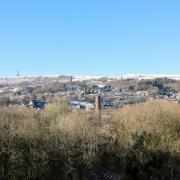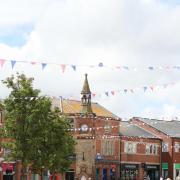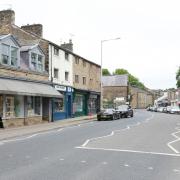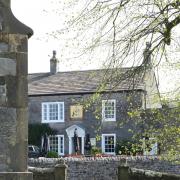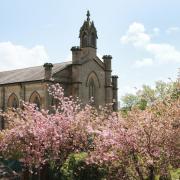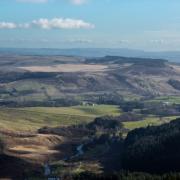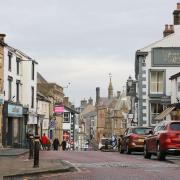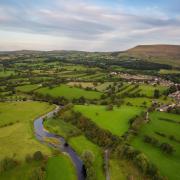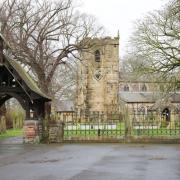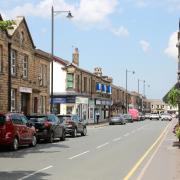A new book throws the spotlight on some of the town’s hidden history and secret stories.
The book Secret Bolton by Ray Jefferson contains a multitude of stories and facts about Bolton which are likely to be surprising and entertaining, even to people who know the town well. Topics covered include the fractious birth of local government, a fatal balloon adventure, the rise of paper making, the struggle for clean water supplies and the growth of commercial entertainment.

Here are five of the tales you may not have known.
The ground-breaking geologist
Henry Carvill Lewis graduated from the University of Pennsylvania at the age of 22. Among other work, he developed controversial theories about the landscapes left behind thousands of years ago by glaciers as they melted, and he came to Britain several times in the 1880s to test his theories.
With his wife, he travelled extensively in northern England by train and on foot with many of his observations being made from a moving railway carriage window. One of his railway journeys took him from Manchester, through Bolton to Chorley. On one of his British excursions he developed with typhoid fever and died, aged 34. Three days later Henry was buried in Walmsley church graveyard.
Modern geological maps show Walmsley church to be built on the very glacial deposits which Henry had come to study. Could there be a more appropriate last resting place?
His name lives on
Moses Holden was born in Bolton in 1777 and lived in Packhorse Street, but the family moved to Preston when Moses was around seven. By the age of ten he was enthralled by the night sky.
Moses wanted to share his enthusiasm for astronomy as a travelling lecturer and found some of the money to support this by building and selling telescopes and microscopes, grinding the lenses himself. Between 1815 and 1828 he gave his lectures in towns across England and also published an inexpensive Celestial Atlas which he no doubt sold alongside his lectures.
In 2015 the Jeremiah Horrocks Institute for Mathematics, Physics and Astronomy at Alston, near Grimsargh, bought a 70-cm robotic telescope used for undergraduate teaching and the encouragement of public engagement in science. It has been named the Moses Holden Telescope.
Lancashire’s first public railway
The Bolton and Leigh Railway was the first public railway to open in Lancashire, pre-dating the Liverpool and Manchester Railway by two years. The northern section of the line was opened from Hulton colliery near Chequerbent to Bolton on August 1, 1828.
Crowds of up to 50,000 people jostled for a view and many sat on the roofs of factories and houses. The events included trial runs with the Lancashire Witch locomotive, which reached speeds of up to 12mph.
The official party of 120 ladies and gentlemen travelled down a rope hauled incline to Bolton at 4pm with the Bolton Old Band playing and flags flying. Having arrived at the bottom of the incline the plan was to draw the wagons to the terminus by horses, but people in the crowd insisted on hauling the wagons themselves.
Bolton’s gentleman aviator
Bolton School pupil John Scott Taggart, who was awarded the Military Cross for his radio work during the fourth Battle of Ypres, obtained his Royal Aero Club Aviator’s Certificate in January 1929.
With only five- or six-hours’ solo flying experience, he flew to Switzerland and soon after his return he flew solo to Bolton for his sister-in-law's wedding.
He planned to land in a field off Markland Hill Lane but there was a misunderstanding with the man designated to indicate the wind direction for the landing, and John had to remain in the air in order not to run the man down. Unfortunately, he could not clear the trees at the end of the field and the aircraft hit the topmost branches at about 60mph. It crashed into a kitchen garden and he was lucky to suffer no more than bruises and a broken rib. Naturally, he attended the wedding.
A day at the races
Interest in horse racing reached a peak during the 18th and 19th centuries, and many entrepreneurs tried their hand at establishing courses and meetings. This included a course at Horwich which seems to have moved around at first, with references being made to meadows behind the Squirrel public house at the bottom of Scholes Bank and a field adjoining Anderton Hall. The first meeting was held in August 1837 and the races were active for eleven years.
Five major races were held over two days in August 1841 and seemed to have been a success: seven special trains were run each day by the Bolton and Preston Railway to bring in the crowds..
By the time the 1847 Ordnance Survey map was produced the course was located on the opposite bank of the River Douglas where Rivington and Blackrod High School stands today.

Secret Bolton, by Ray Jefferson and published by Amberley Publishing, is out now.
Three more to enjoy

The Girl in the Picture by Terry Marsh
This first foray into fiction by Chorley-based walking and travel writer Terry Marsh is a genealogical mystery following the blossoming love of present-day family history researchers as they unravel the life of a domestic servant and a fascinating cast of Victorian characters.
Delaney’s Challenge by David Tetlow

The third book in the Delany series by Rossendale-born former police officer David Tetlow is an action-packed thriller following the exploits of special forces officer turned undercover detective, Josh Delaney. Written with obvious knowledge of investigatory processes, it’s an adventure-packed page turner.
You Must Endure: the Lancashire Loyals in Japanese Captivity, 1942–1945 by Chris Given-Wilson

The previously untold story of the Lancastrians who endured over three years of incarceration, is told by Chris Given-Wilson, whose father was one of the prisoners. The book is written with warmth and humour and reveals the best and the worst of human nature.






